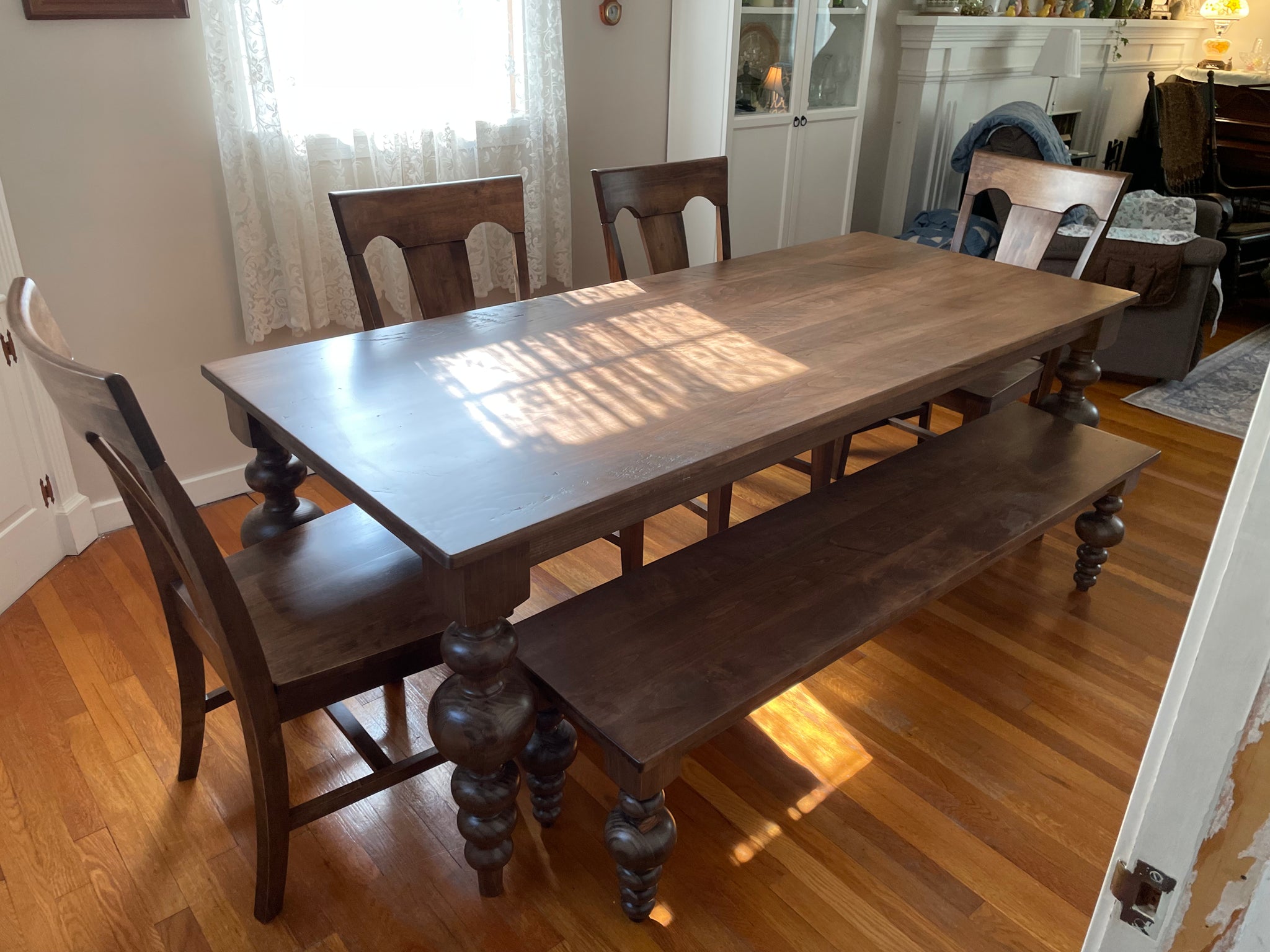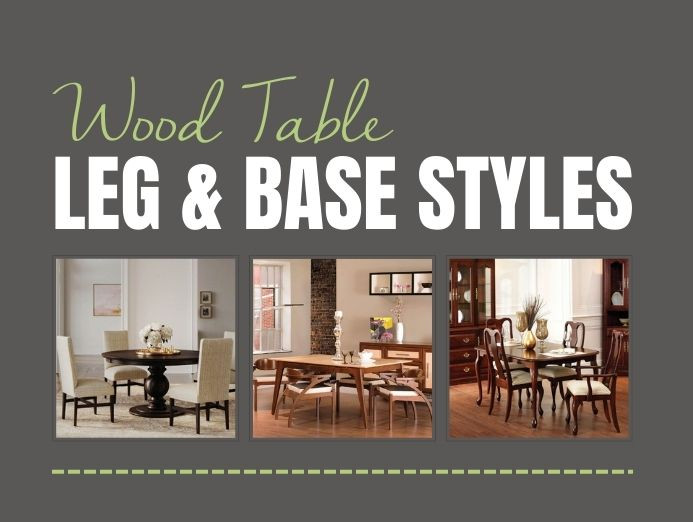Just How to Choose the Perfect Dining-room Table Legs for Your Home Design
Selecting the optimal dining space table legs is a nuanced procedure that requires mindful factor to consider of numerous aspects, including your space restrictions, visual choices, and useful needs. The interaction between designs, materials, and measurements can substantially affect the setting of your dining area, making it necessary to approach this decision systematically.
Assess Your Eating Room
Analyzing your eating area is vital for selecting the right table legs that enhance both looks and capability. Begin by measuring the measurements of your eating location, including ceiling elevation, flooring area, and proximity to other furnishings. This information will certainly assist figure out the suitable dimension and height of your table, which directly influences the option of table legs.
Next, consider the design and design of your eating space. For circumstances, an open-concept style might gain from table legs that use aesthetic agility, such as slender steel or acrylic choices. Conversely, an extra traditional setup might ask for strong wood legs that offer a feeling of durability.
Assess the existing shade palette and products in your dining location. Harmonizing the table legs with these aspects creates a cohesive look that improves the overall style.
Eventually, a detailed analysis of your dining area will certainly assist you in making an informed choice, making sure that your table legs not just boost the visual charm however likewise serve useful objectives.
Consider Your Style Preferences
When selecting dining-room table legs, it is important to show on your personal design preferences, as they dramatically affect the general aesthetic of your eating room. Your selection of table legs can either enhance or comparison with existing decoration, making it important to align them with your recommended indoor style motif.
If your home leans in the direction of a modern aesthetic, think about sleek metal or minimalist wooden legs that offer a tidy, clean look. For a much more standard method, ornate wood legs with detailed carvings can add a touch of style and elegance. Industrial styles profit from robust, raw materials such as reclaimed wood and steel mixes, showing a rugged appeal.
Furthermore, farmhouse and rustic designs typically prefer strong, chunky legs that evoke a sense of warmth and convenience. Conversely, if your decoration is eclectic, you may select unconventional shapes or a mix of materials to create visual rate of interest.

Evaluate Product Options
The choice of product for eating room table legs plays a critical role in both resilience and visual charm. Common products include wood, metal, and composite options, each offering distinct features that can influence the total look and longevity of your table.
Wood is a timeless choice, known for its warmth and flexibility. Woods like oak and walnut supply remarkable toughness and can be finished in various stains to match any kind of style. Softwoods like yearn are more vulnerable to damages and scrapes, making them less excellent for high-traffic locations.
Metal legs, usually crafted from steel or aluminum, exude modernity and industrial appeal. They are resistant and highly durable to wear, making them appropriate for families with kids or constant celebrations (dining room table legs). In addition, steel can be completed in various shades, improving the modification opportunities
Composite materials, such as MDF or laminate, deal cost and varied styles. While generally less resilient than strong timber or metal, they can still provide an elegant look and are often very easy to preserve.
Ultimately, the product you choose should line up with your way of living, aesthetic preferences, and the level of use your eating table will experience.
Determine Elevation and Size
Choosing the ideal height and size for your dining-room table is necessary for both functionality and convenience. The common height for eating tables typically ranges from 28 to 30 inches, enabling enough legroom for the majority of individuals when seated. Nevertheless, it is crucial to take into consideration the measurements of your eating area and the kinds of chairs you intend to use.

In addition, think about the percentages of your eating area. A larger table in a spacious area can develop a grand setting, while a smaller table functions well in even more intimate setups. Eventually, the best elevation and size will harmonize with your total decor and improve the eating experience for you and your visitors.
Explore Modification Possibilities

Additionally, the design of the legs can be customized to fit numerous styles, such as rustic, contemporary, or commercial. Tapered legs can evoke a mid-century modern feeling, while beefy, block-style legs might resonate with conventional or farmhouse decor.
Homeowners can likewise explore shade coatings, from all-natural timber discolorations to repaint, enabling them to match or contrast with the tabletop and surrounding decor.
In addition, leg elevation can be adjusted to suit particular seating arrangements or individual preferences, boosting both comfort and functionality.
Finally, distinct embellishments, such as makings or ornamental braces, can additionally customize the table legs, making the dining experience not simply a dish however a declaration item in the home. By taking into consideration these modification alternatives, homeowners can produce an eating area table that truly mirrors their individuality.
Final Thought
Selecting the perfect dining-room table legs needs mindful consideration of different aspects, including the dimensions of the dining area, style choices, material longevity, and wanted elevation. Modification choices even more enhance the ability to attain a cohesive aesthetic that matches the general decoration. By methodically examining these aspects, property owners can make certain that the selected table legs not just meet useful demands yet likewise add favorably to the eating experience and ambiance of the home.
Selecting the suitable dining space table legs is a nuanced procedure that needs careful consideration of different elements, including your area restrictions, aesthetic preferences, and practical needs.Evaluating your eating area is vital for choosing the right table legs that enhance both aesthetics and performance.When identifying dimension, gauge the area where the table will be put to guarantee it fits conveniently, more info here allowing for at least 36 inches of clearance around the table for very easy activity. A larger table in a large location can develop a grand atmosphere, while a smaller table works well in even more intimate setups.Selecting the excellent dining area table legs needs careful factor to consider of various factors, consisting of the measurements of the eating room, style preferences, product toughness, and desired height.